Updated February 5, 2025
Find out when to plant what for a variety of vegetables and herbs. Learn what vegetables prefer to to be planted in ground and what ones you have to start indoors for growing zones. Download the planting guide for planting in your garden this spring based on your local frost dates. Perfect planting guide for beginners and tips for seasoned gardeners alike.
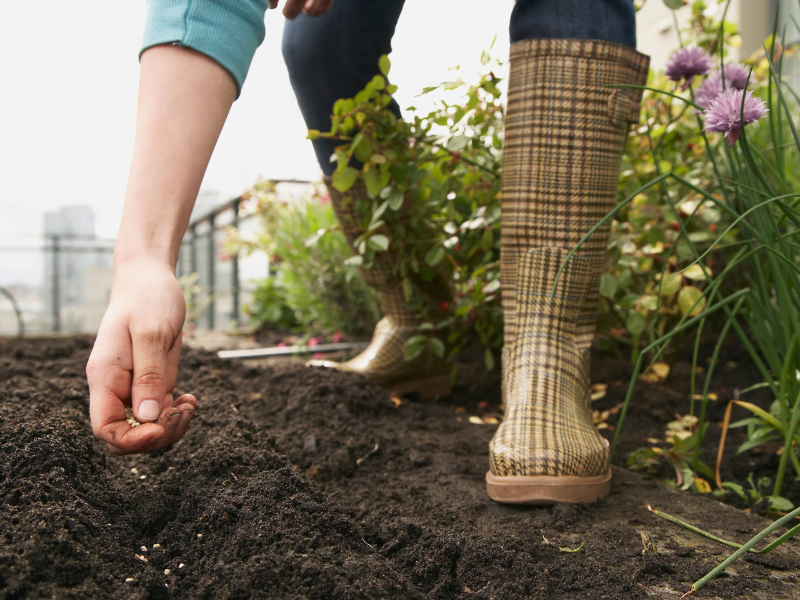
Planting Guide for Beginners
You will find a minimalist list of
1. the seeds to start indoors and
2. the crops that prefer to be planted directly into the soil.
To get my full comprehensive list of in ground planting guide that I use download it here. Included are vegetables, herbs and flowers that I don’t mention below.
*In a hurry? Pin for later!

Starting Seeds to early or planting too late
Some plants and seeds are tolerant of cold weather, while others are not tolerant to cold at all.
If you start seeds too early for certain plants they will not be able to germinate as it’s too cold, some seeds will even rot in the ground when planted to early. Still other vegetables are killed immediately by frost.
If you plant seeds too late, some will miss out on the frost needed to germinate. Others will not have a long enough growing season to reach maturity to be able to eat and enjoy.
Sounds complicated right? The good news is there are charts tailored to your growing zones. Including mine below. That help you know when to plant what.
Knowing this also makes organizing your seeds easier too!
Frost Dates & Seed Starting

Knowing your last average frost date for your area is super important! If you’ve read any seed packages you’ll notice they refer to this date for when to plant the seeds.
The first frost date refers to the first average fall frost date in your area. The last frost date refers to the last average frost date in your area. When it comes to planting everything revolves around these dates. You’ll even know how many days you have in your growing season based on these dates.
Find frost dates & growing zones for your area…
Check out my post on how to find frost dates and growing zones for your area.
Minimal Seed starting Indoors list
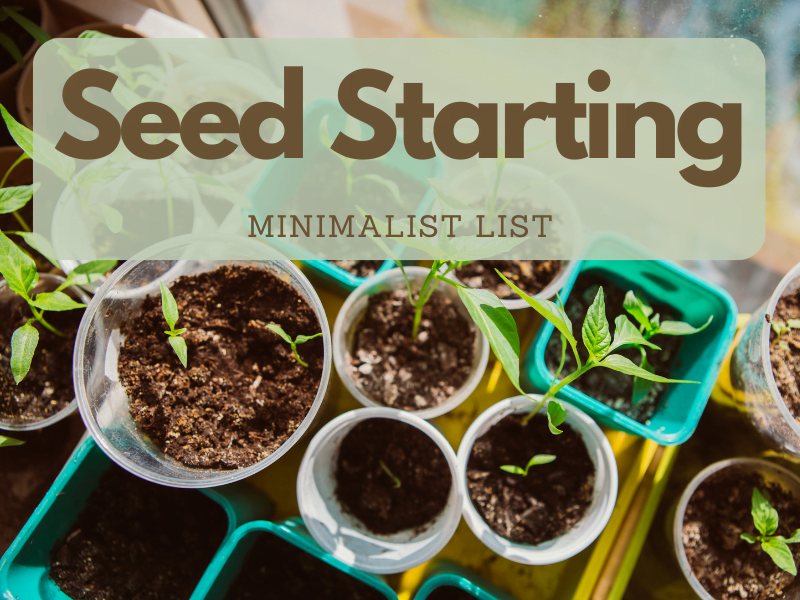
Are you very limited on space? Have a busy enough life that you don’t want to have a bunch of seedlings to try to keep alive? If you said yes then you’re in good company, me too!
In my gardening experience starting seeds indoors in non-optimal conditions does NOT give them a head start if they would have enough growing time outdoors when directly sown.
I only start the seeds indoors that the growing season is too short for. Like tomatoes or peppers.
One year I started cucumber seeds quite late, so I bought a plant and stuck it in the ground to “ensure” we’d have cucumbers sooner. Surprisingly, both the seeds I sowed directly in ground very late and the start I bought matured at the SAME TIME!
So my recommendation, especially for beginner gardeners, is to only focus on the seed starting list below. Don’t think you’re getting ahead by starting vegetables, as some truly prefer being directly sown.
Minimalist seed starting list for zones 3-5.
The seed package will tell you if you need to start the seeds 6-8 weeks or 8-12 weeks before your last frost date. Learn how to find your frost date in this post.
- tomatoes
- peppers
- celery
- parsley
- basil (in my house pot)
- onions (note beginner gardeners try purchasing onion sets instead)
Direct Sowing Planting Guide for Beginners
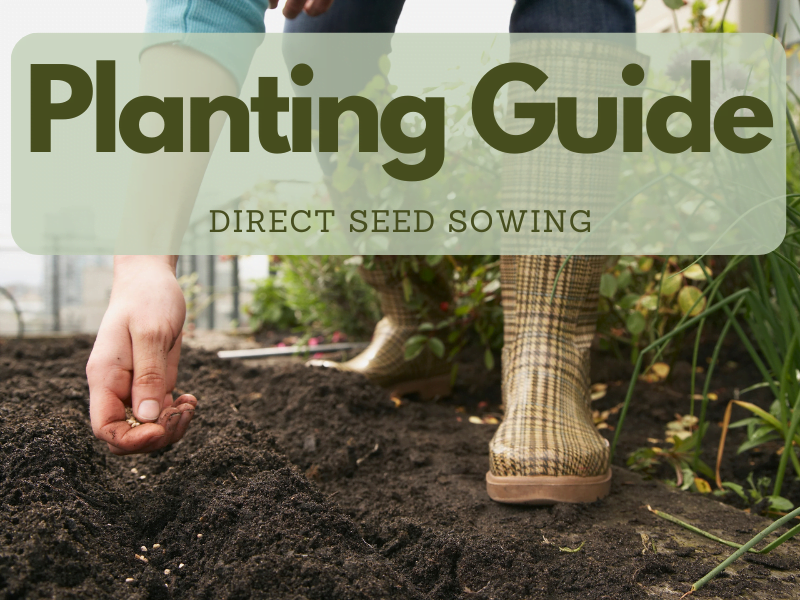
Here I will focus on plants that prefer to be seeded directly into the soil (not transplanted).
There are four different categories of vegetable, herb and flower seeds/plants. Each likes slightly different weather.
To get the full list of in ground planting guide that I use download it here.
Cool season Loving Vegetables
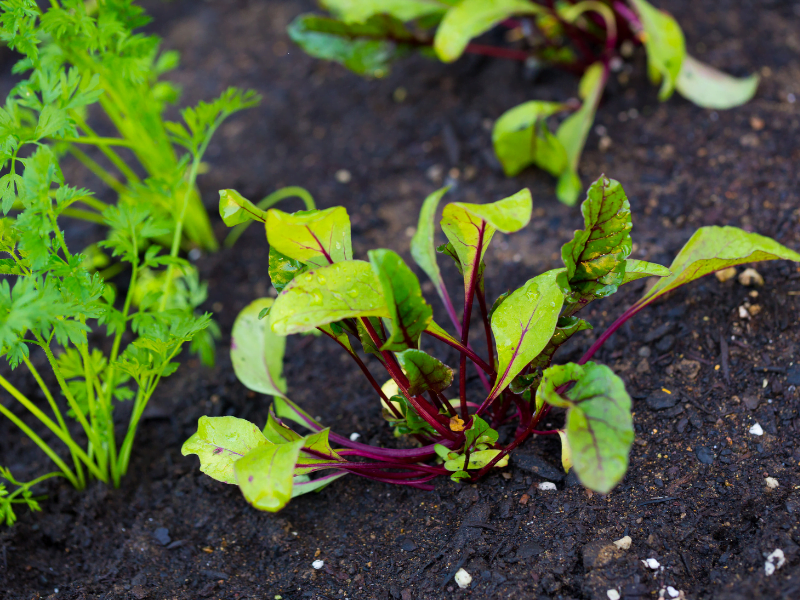
There are cool season loving plants that are very hardy and can be planted out 4-6 weeks before the last average frost date. In order to germinate some seeds even need some frost.
Others are are not quite as hardy and can to be planted directly outside 2-3 weeks before the last average frost date.
Very Hardy Vegetables
Vegetables that like to be directly sown 4-6 weeks before the last average frost date.
- spinach
- kale
- lettuce
- collards
- endive
- onions
- leeks
- peas
- turnips
- rutabagas
- kohlrabi
- Fava beans (broad beans)
Hardy Vegetables
Vegetables that like to be directly sown 2-3 weeks before the last average frost date.
- radishes
- mustard
- potatoes
- beets
- carrots
- parsnips
Warm Season Loving Vegetables
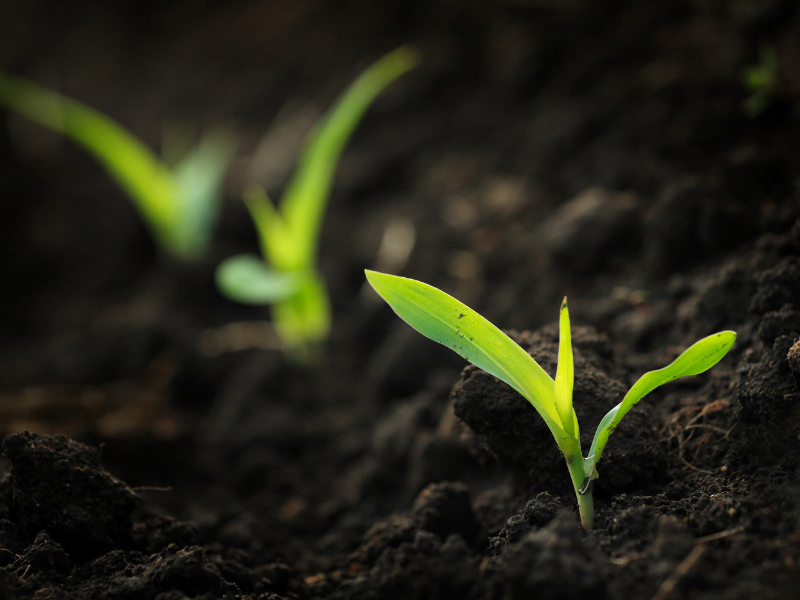
Warm season plants grow best in warm weather and seeds only will germinate if the soil is warm enough. If you plant them too early, the seeds just may rot in the ground or a late spring frost will kill them (the first fall frost will too).
After the average last frost date is when you will be planting out your seed starts as well.
Tender plants should be planted 0-2 weeks after the last frost otherwise they may be injured or killed by frost. However, they are tolerant of cold weather, just not a frost.
If you’re worried about these plants with a surprise frost you could always run out with blankets to protect them (or a row cover to extend their season). Growing up in zone 3, this was the nightly routine for a while so we could get a cucumber harvest for longer.
Tender Vegetables
Vegetables that like to be directly sown 0-2 weeks after the last average frost date.
- sweet corn
- summer squash
- snap beans (bush/pole)
- dry beans
- New Zealand spinach
The very tender plants can be planted 2-4 weeks after the average last frost date. These plants will immediately be killed by frost and will not tolerate cold weather.
The seeds won’t even germinate unless soil temperatures are very warm, at least 60 degrees F (15.6 degrees C). Cucurbit seeds are in this category, such as cucumbers, summer squash, winter squash, watermelons, muskmelons and gourds.
Very Tender Vegetables
Vegetables that like to be directly sown 2-4 weeks after the last average frost date.
- cucumbers
- winter squash
- pumpkins
- melons
- okra
- lima beans
- garbanzo beans
- yardlong beans
Download my handy all in one seed starting planting guide.
Fall seed planting list
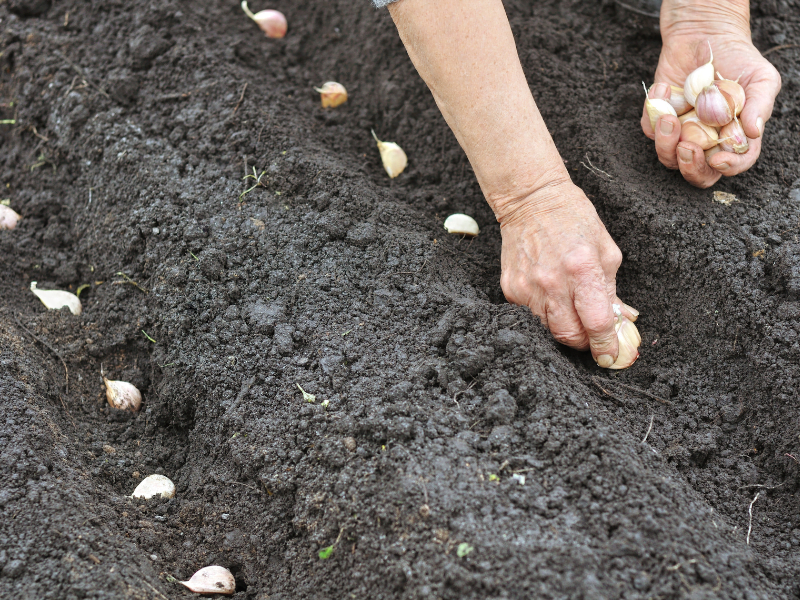
The final category are plants that need to be cold stratified and actually like to go through a winter and come up in early spring. They like being directly sown in ground in the fall. I’d suggest you remember to mark where you planted them.
Garlic would be the most popular in this category as the best time to plant garlic is late fall, while the ground is still workable.
Seeds that like to be directly sown in fall are:
- garlic
- lovage
- lavendar
- echinacea
- parsley
- yarrow
- peonies
FREE Planting Guide
To get my full comprehensive list of in ground planting guide that I use download it below.
You will find a minimalist list of the seeds to start indoors as well as the crops that prefer to be planted directly into the soil. Included are plants that I don’t mention above like all of my favourite vegetables, herbs and flowers.
Take Notes, then Save this Pin for later to your Gardening Board.
Experience from experimenting and learning is everything in gardening! Take notes, I promise you’ll forget things by next year and wish you had written things down!
Remember, if all else fails, you can always buy some tomato starts or onion sets and try again next year.
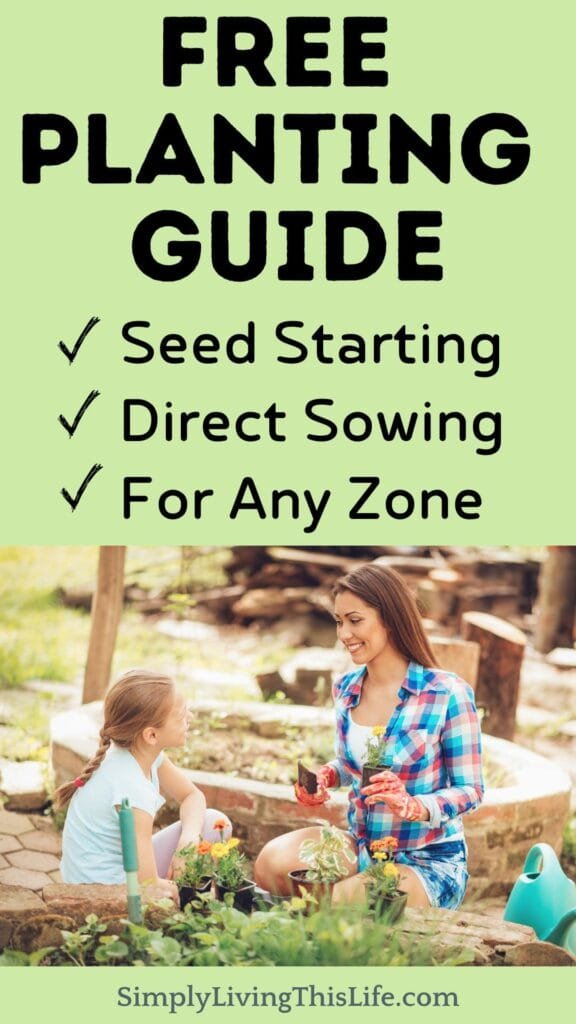
Happy planting!








So helpful! Thank you!!
I love these tips. We are in Wisconsin and allllmost ready to start planting our garden!